Dôme Do, We
DÔME DO,WE (A Space For Rest)
—After Yukihisa Isobe’s Air Dome
As part of the Community of Images exhibition, we were very pleased to invite Philadelphia-based artist Aaron Igler and urban planner Yukihisa Isobe to revisit Isobe’s connection to Philadelphia and New York City of the 1960s and ‘70s. The project reflects Isobe’s innovative and socially-engaged work, which Igler took as an inspiration to create DÔME DO,WE (A Space For Rest), a space for artists, musicians, builders, healers, historians, and storytellers to gather and partake in a collaborative process. Grounded by Isobe’s artistic practice and experiences as a postgraduate student at The University of Pennsylvania in the late-1960s, Isobe worked with organizations including the NYC Dept. of Parks & Recreation and The Phoenix House (a drug and alcohol rehabilitation facility). In 1970 Isobe organized a large-scale inflatable artwork titled Air Dome to mark the first Earth Day celebration at New York City’s Union Square.
Below, are images of the Air Dome at 1970 Earth Day Celebration in Union Square, NYC. Courtesy of Yukihisa Isobe and Museum of Contemporary Art, Tokyo.
As part of the Community of Images project, Igler led the design and programming DÔME DO,WE (A Space for Rest). The project was conceived as a site for collaborative skillshare, small group dialog, a lecture program, sonic performances, film screening, and more.
Sited within the monumental Sycamore grove of Eakins Oval on the Benjamin Franklin Parkway and rooted in the concept of mutually-supporting systems, DÔME DO,WE (A Space for Rest) investigated geodetic models as they relate to Isobe’s work, contextualized by his creative influences including the pioneering landscape architect Ian McHarg (UPenn) and the architect/futurist Buckminster Fuller, who each developed groundbreaking ideas focused on humans relational role within built and biological environments as a way of better understanding, managing, and preserving the earth.
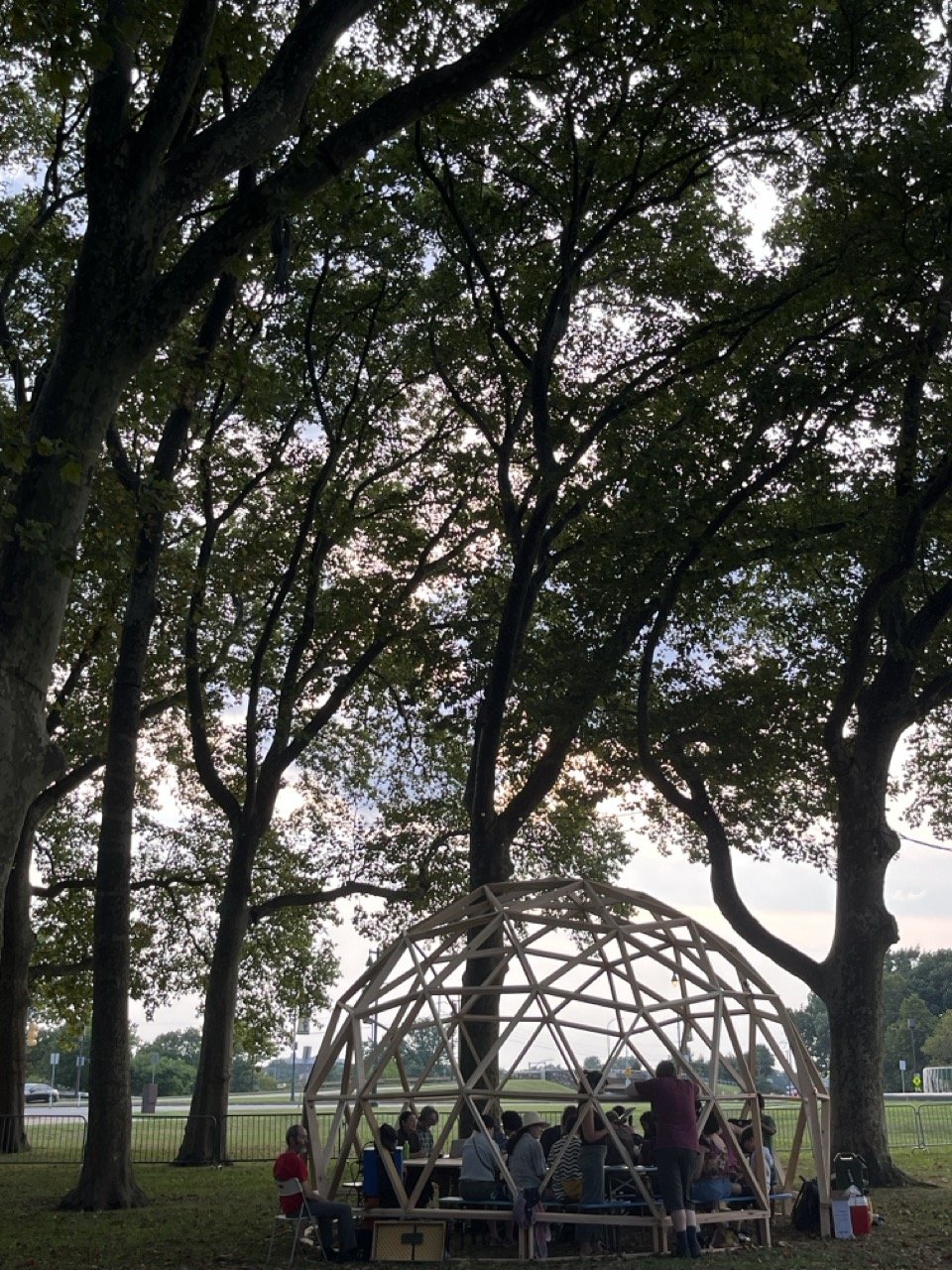
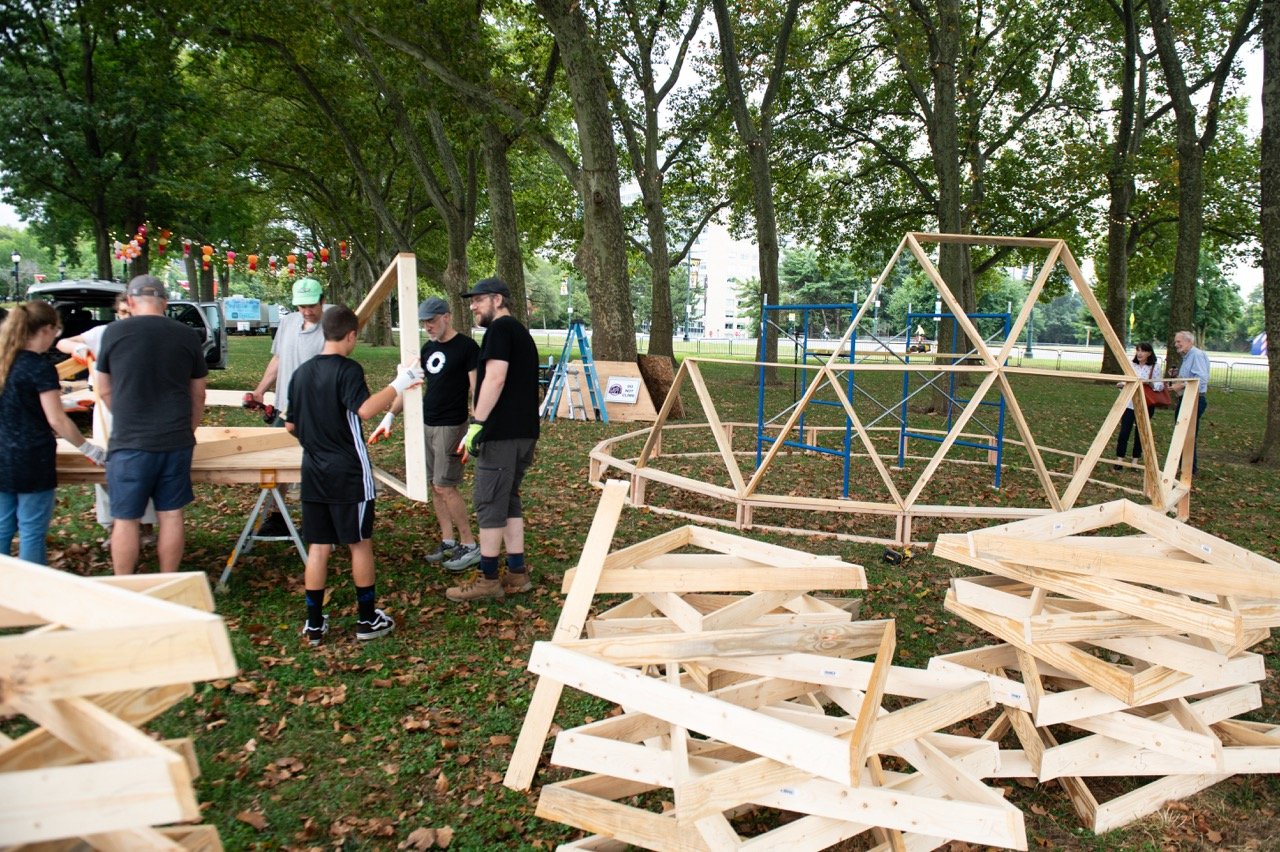
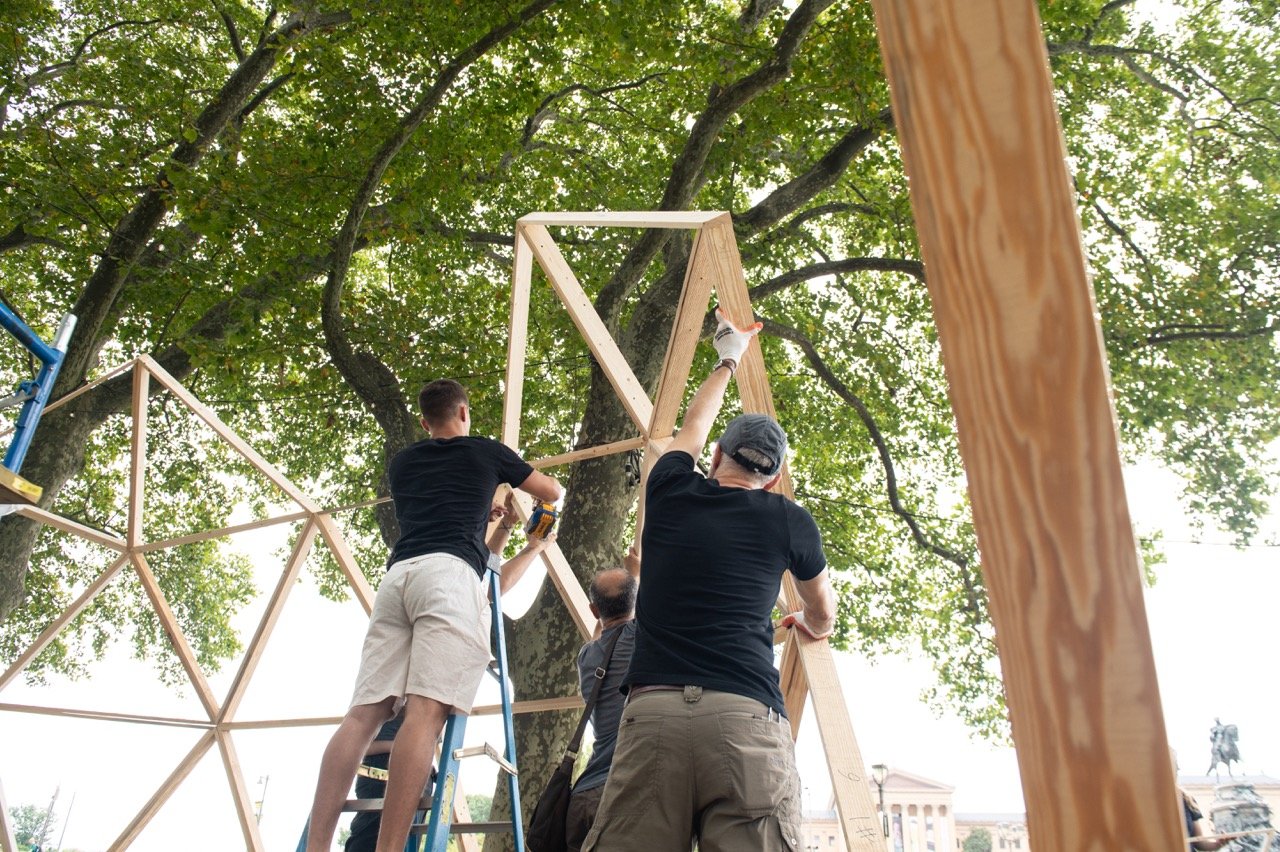

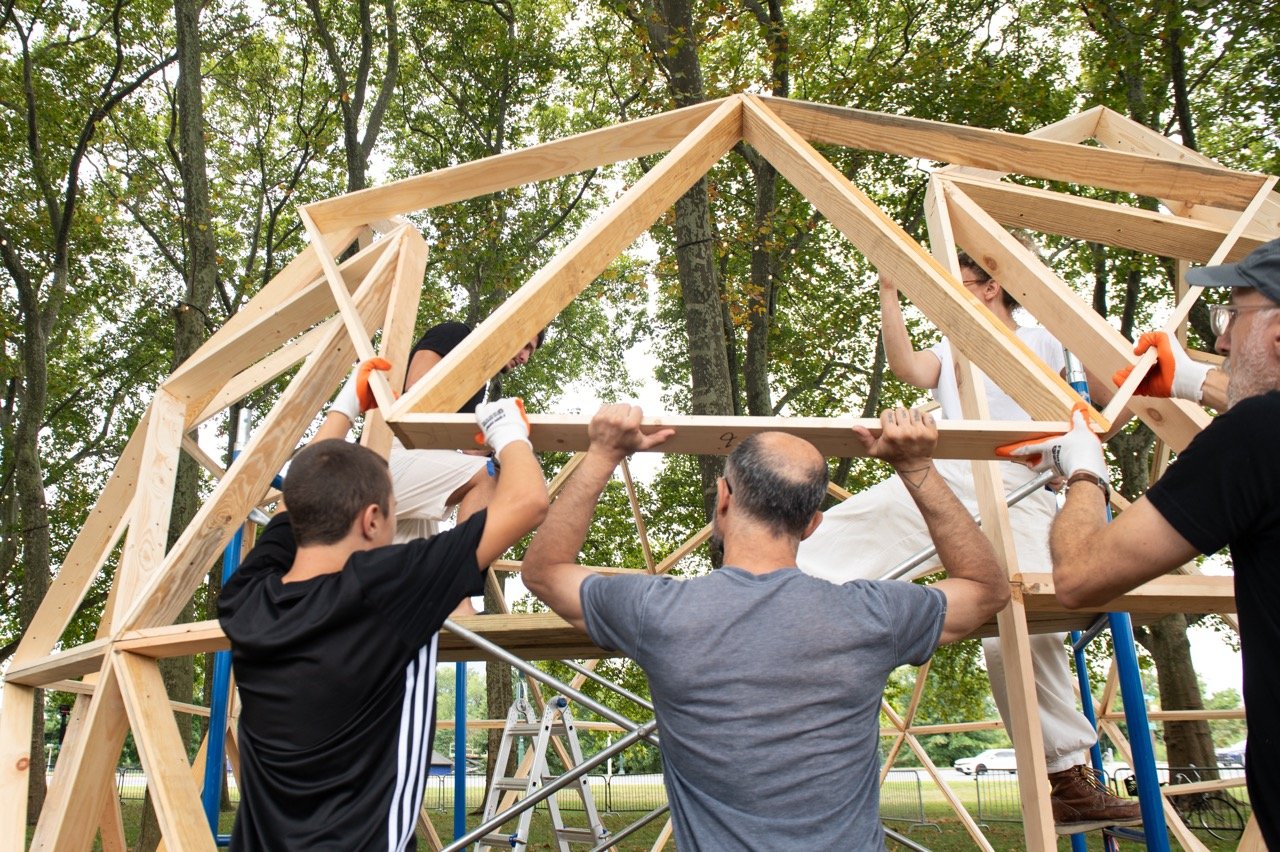
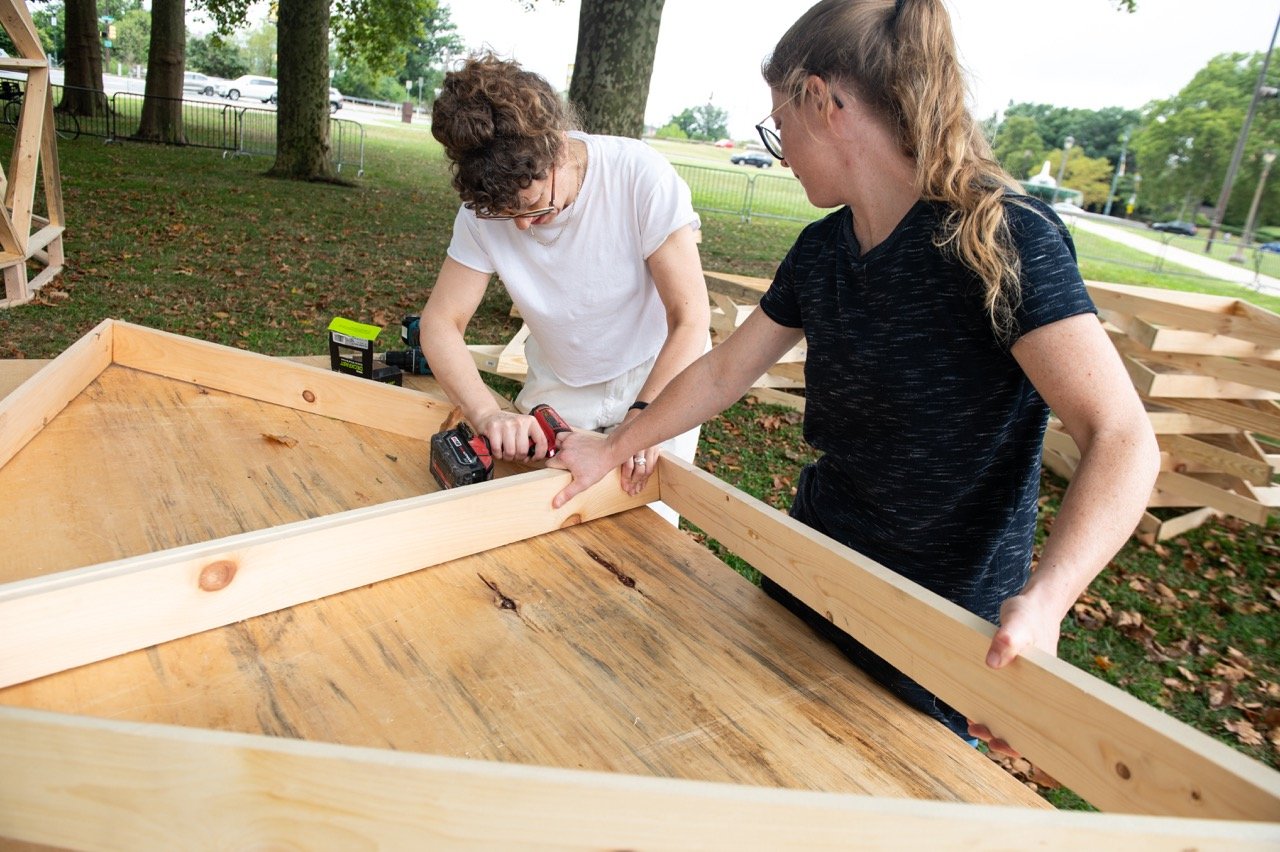
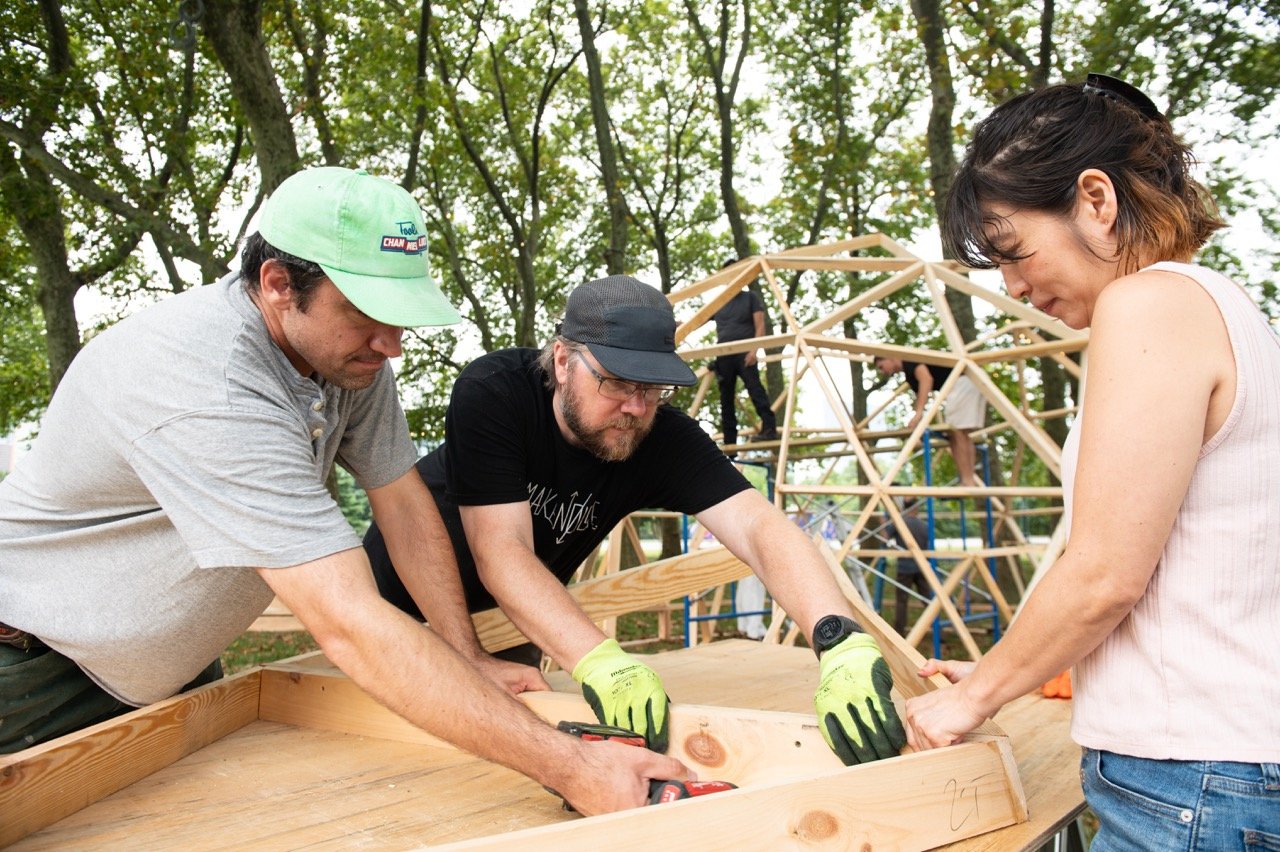
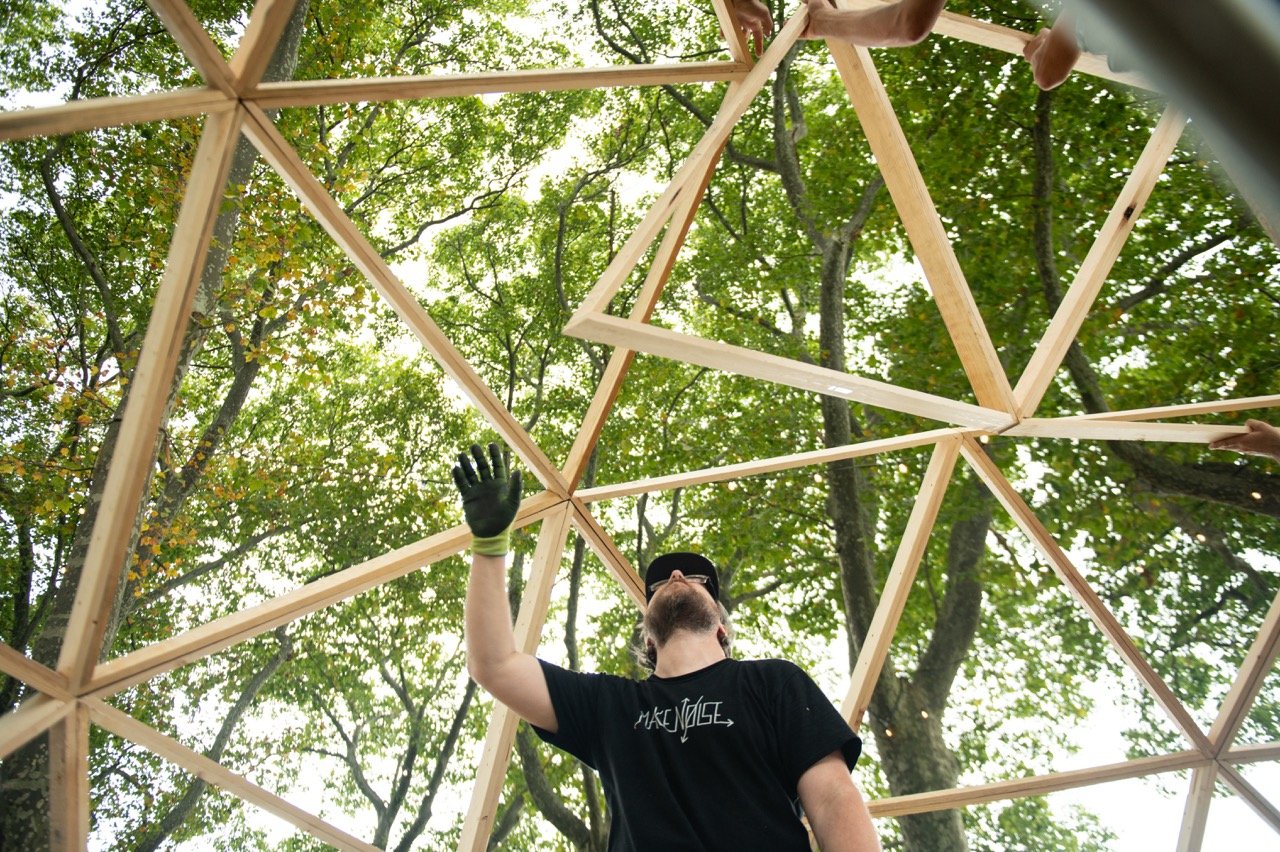
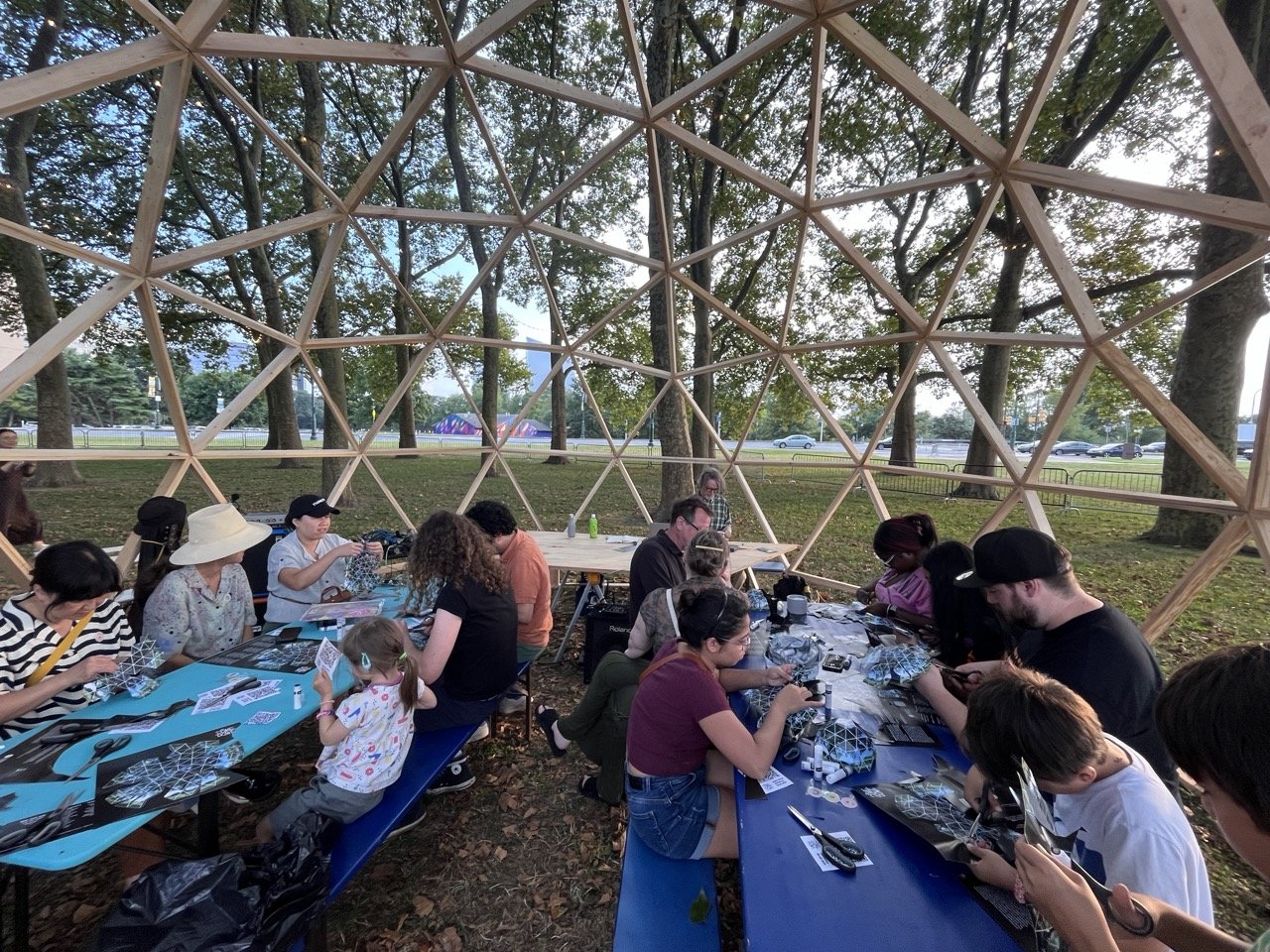
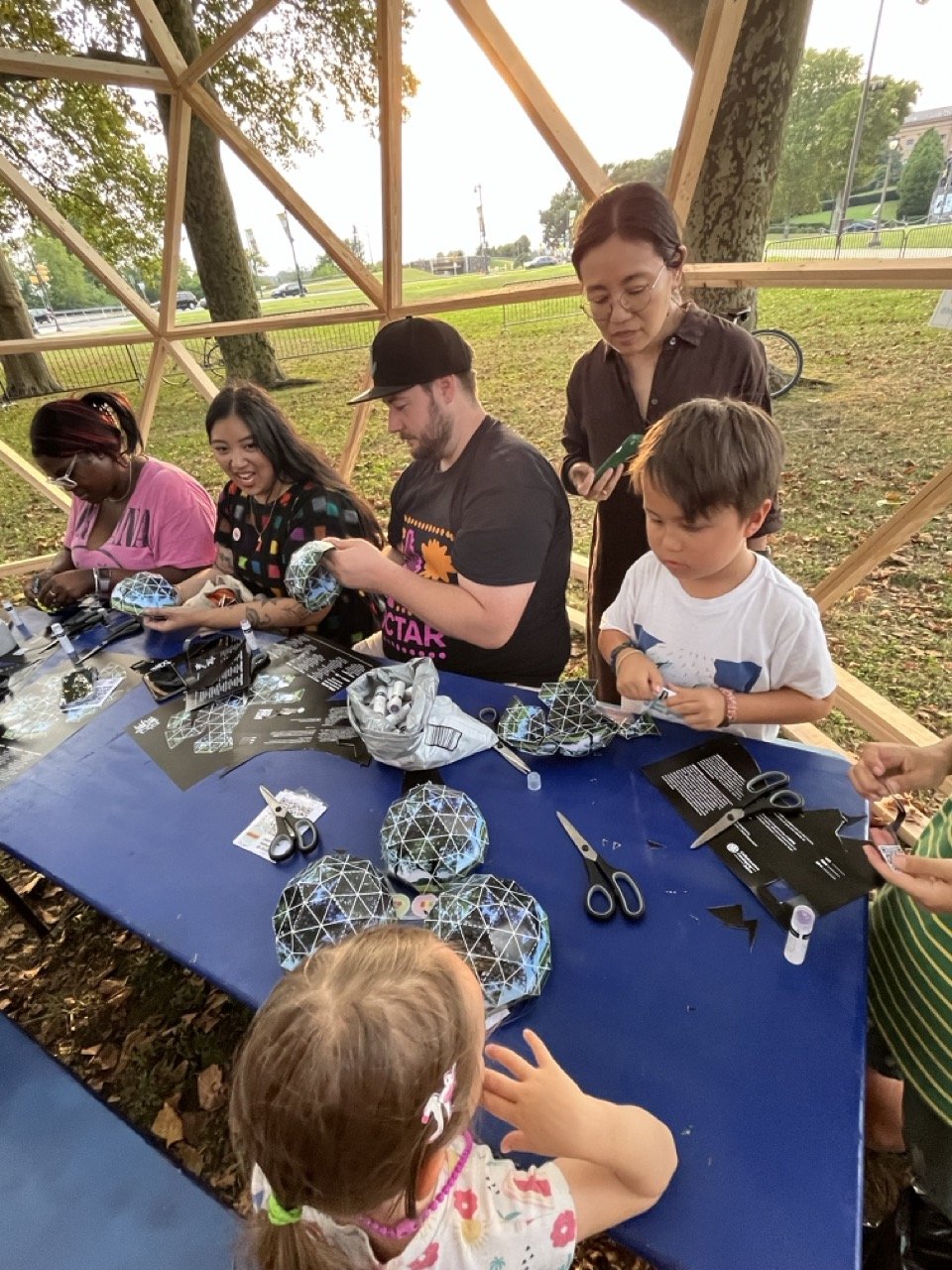

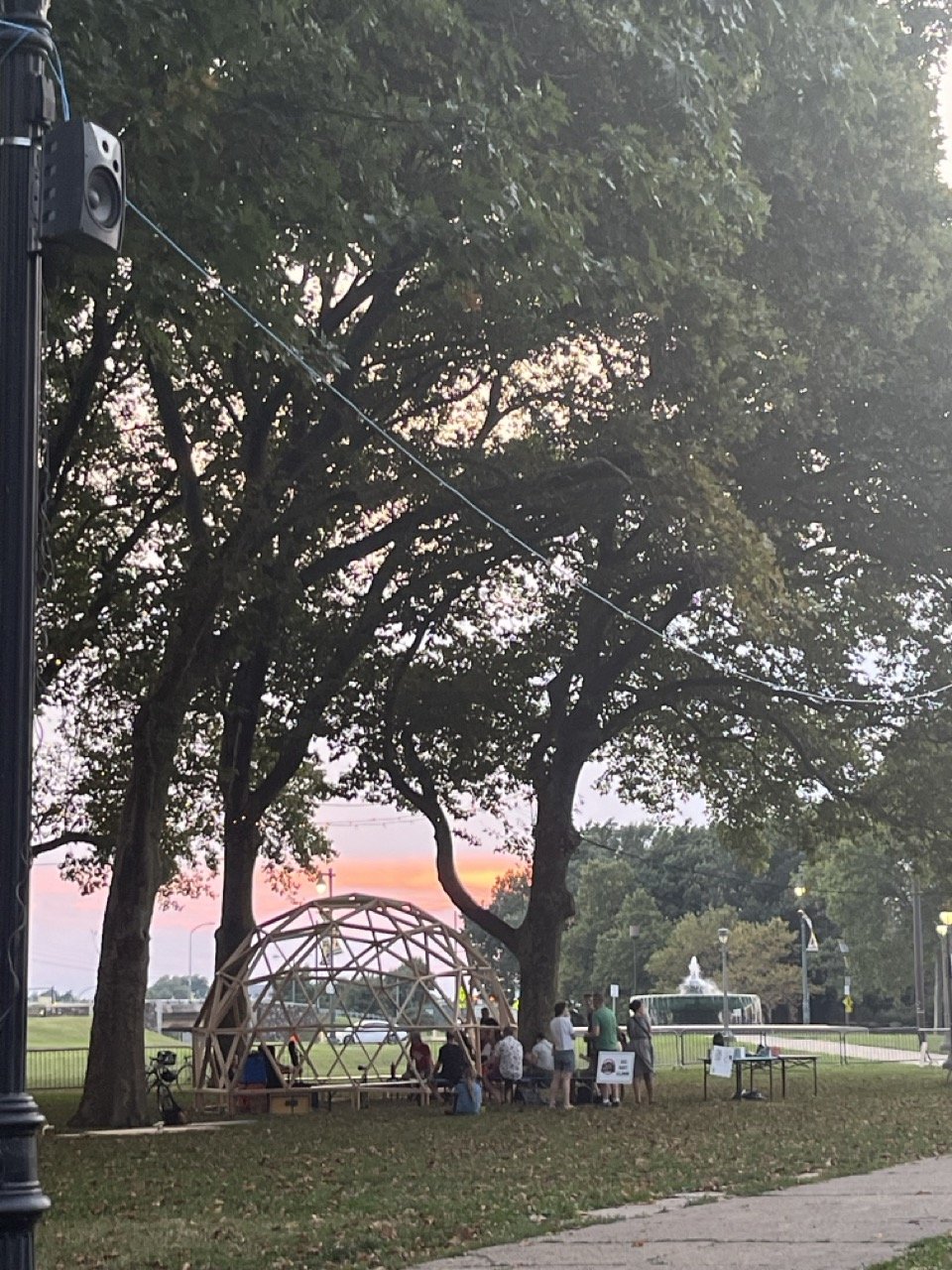
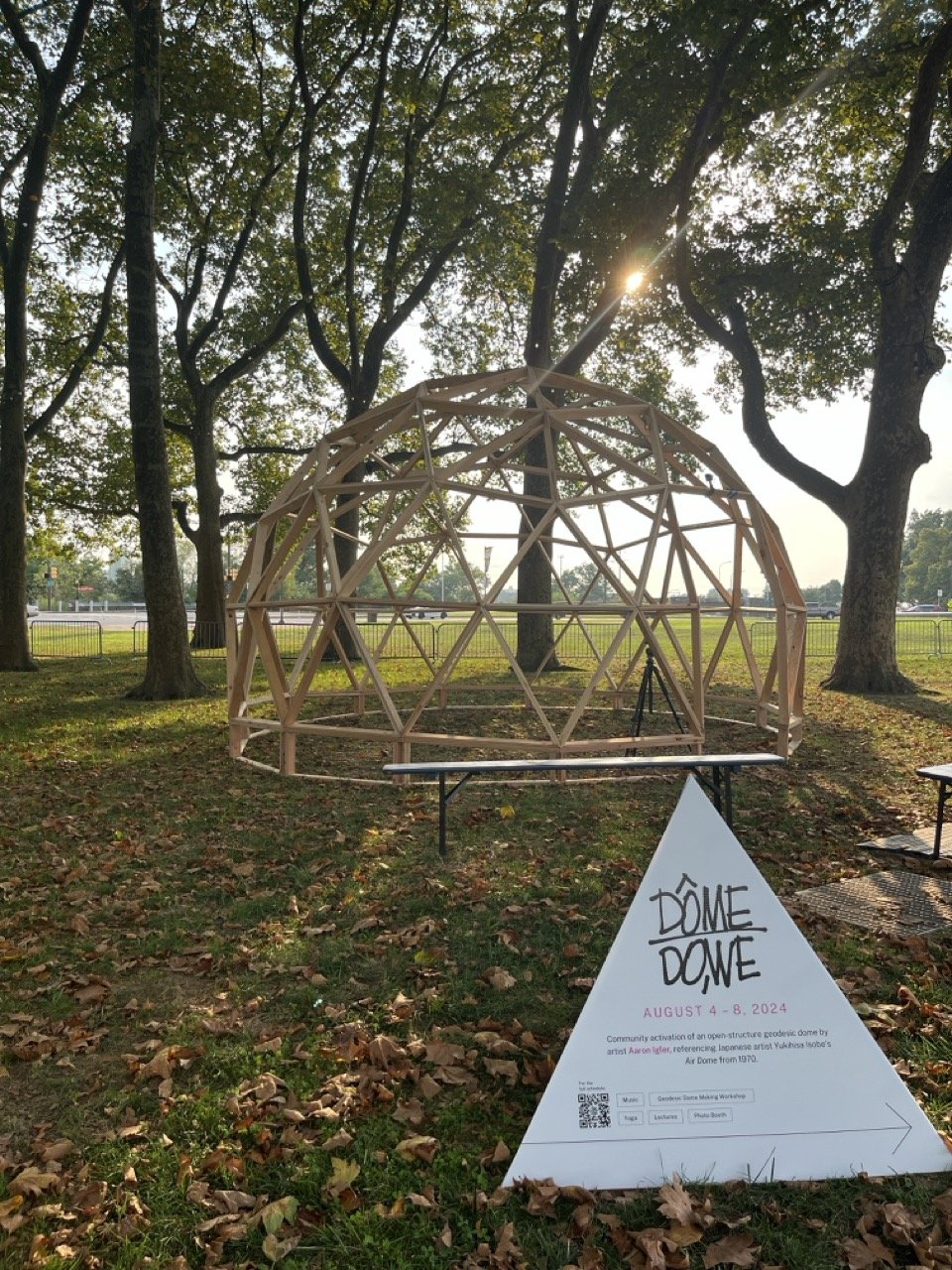


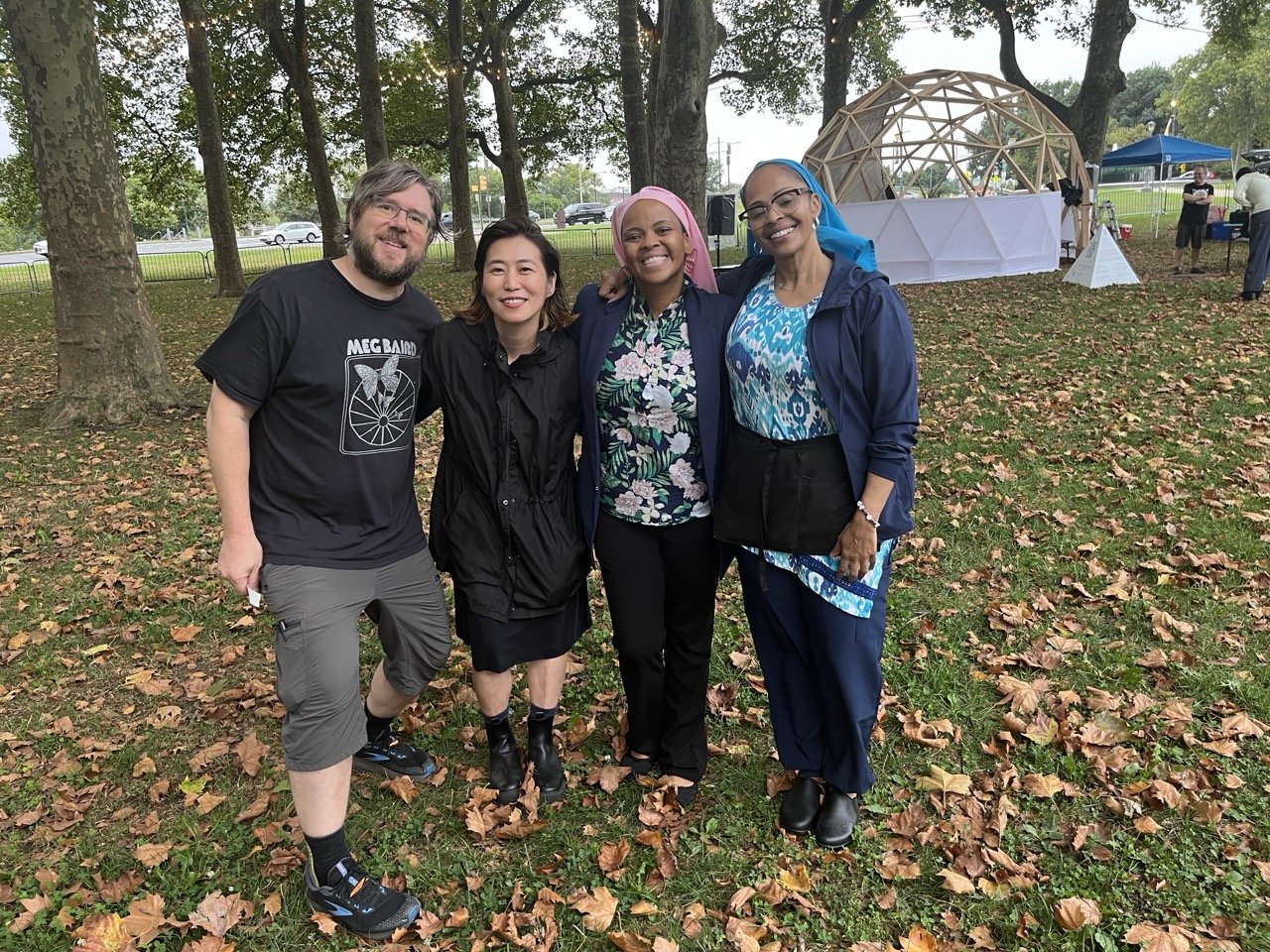
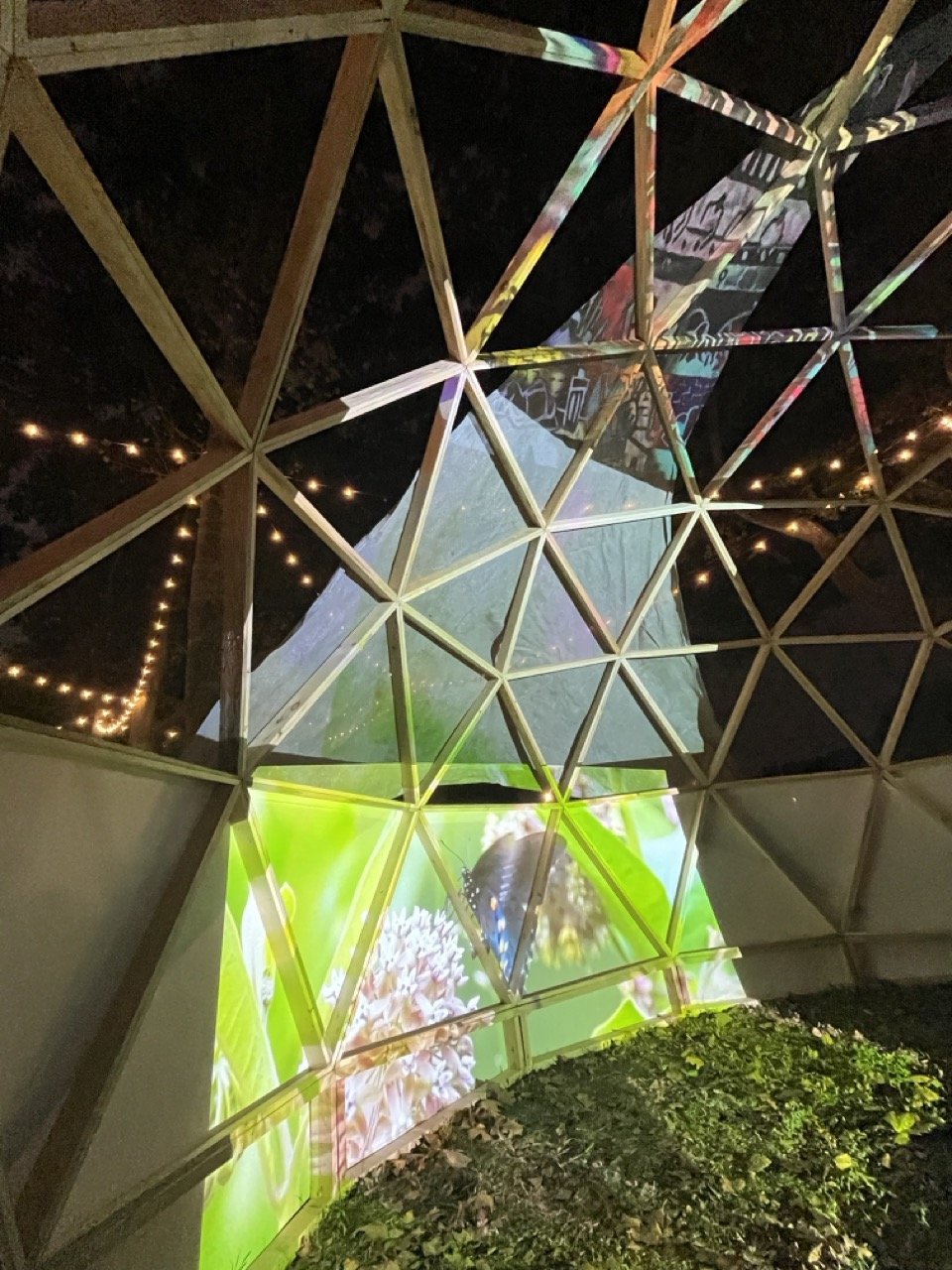
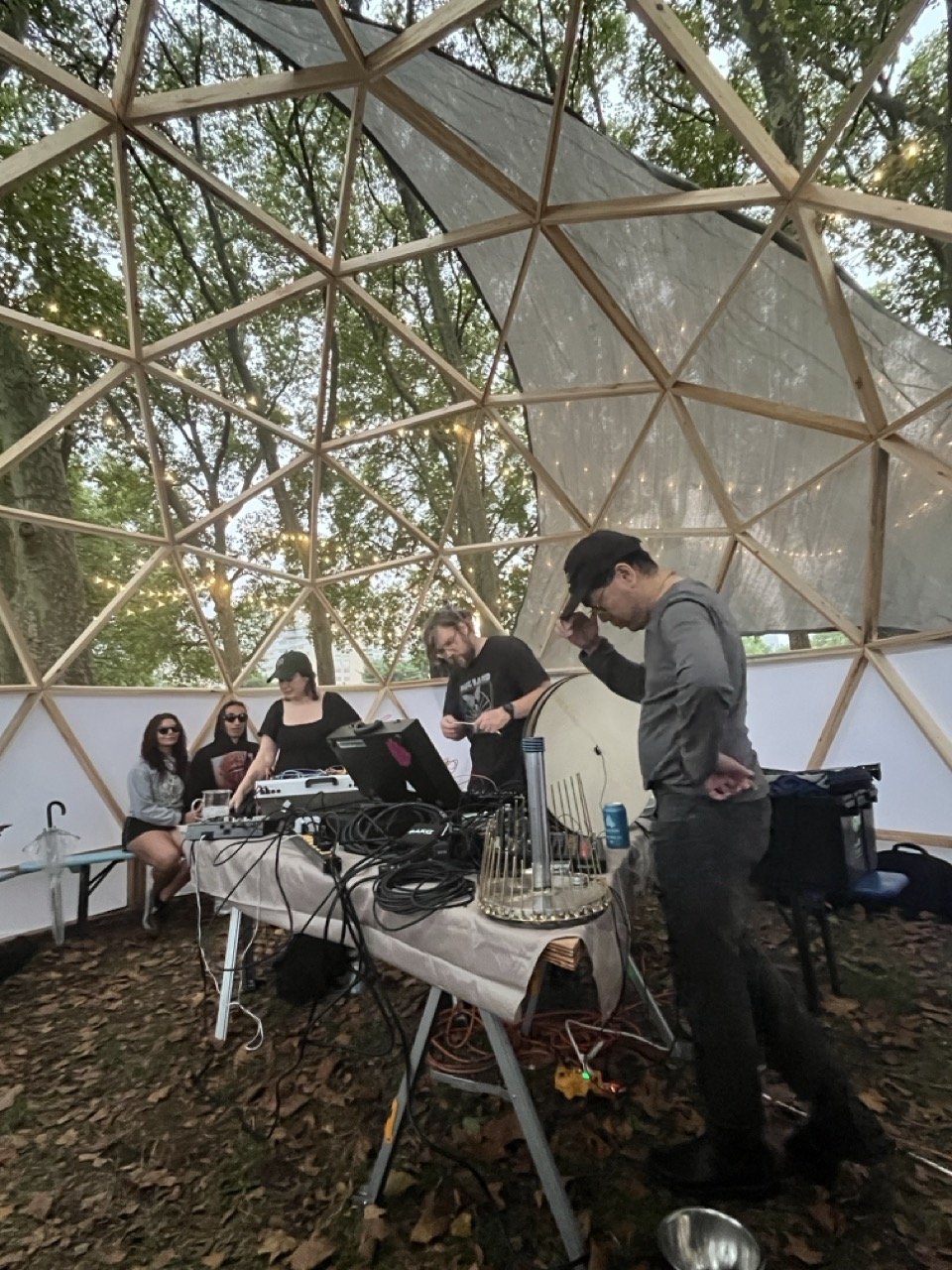
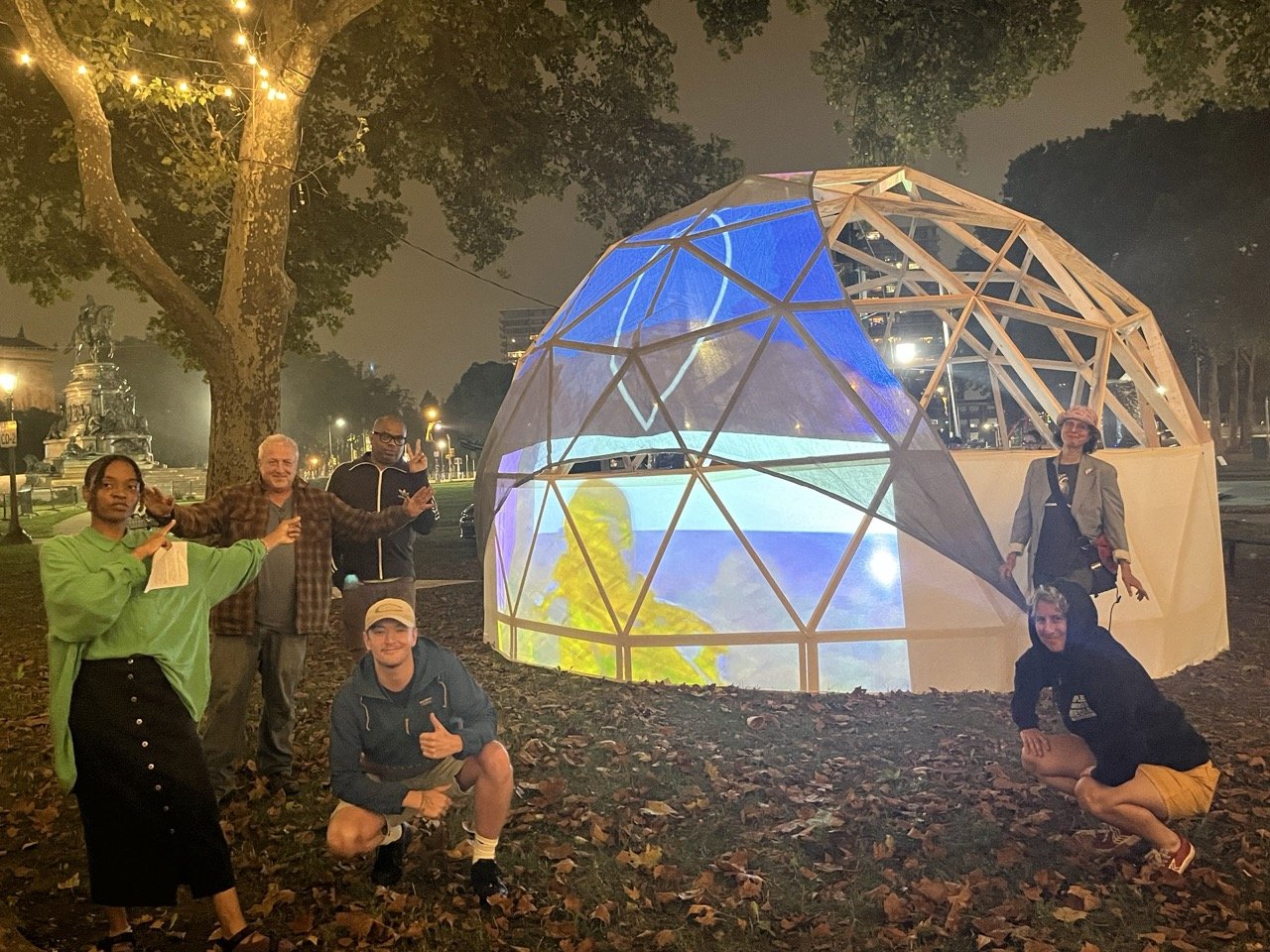
Artistic/Curatorial Statement—Aaron Igler
DÔME DO,WE (A Space for Rest) is a wooden geodesic dome, an open-structure composed of over 100 triangular modules. Sited under the shade canopy of a majestic Sycamore grove on Eakin’s Oval along the Benjamin Franklin Parkway, this ephemeral urban oasis is inspired by Yukihisa Isobe's Air Dome (1970), as a site for art, ideas, and communal experience.
DÔME DO,WE was conceptualized as a transmissive architecture, allowing for air, sound, and light to pass freely through it. Functioning primarily as an organizing framework for placemaking and presentation rather than as a built shelter. It is a matrix of mutually supportive edges, an entity whose strength and durability surpasses that of any individual wooden member. I view this as aspirational, symbolic of the potential of collective ideas and shared social experiences. The visual geometry of the architecture intends to enliven the creative spirit of all those who gather within and around the dome.
The title DÔME DO,WE is a playful pun on the French phrase dôme, d’oui (dome of yes) and reflects its optimistic vision. Drawing contextual parallels to Air Dome, this project resonates with the climate of the late 60s/early 70s—a period marked by dynamic cultural and environmental pressures similar to those we experience today.
The daily programming includes a group mediation each morning, a collective invitation to pause. By aligning our bodies and senses to the rhythm of the surrounding urban Landscape we can ebb and flow in greater harmony.
Leveraging the DNA of the geodesic architectural form we will pay homage to Buckminster Fuller and his semi-utopian concepts. During a participatory workshop and presentation, visitors will have the opportunity to transform a paper print into a scale model of DÔME DO,WE. The open-edition print will be available as a souvenir for all visitors.
My personal interest in field-recorded sound and improvisational composition has led to programming a series of daily sonic activations. The performances aim to acknowledge and harmonize with the ambient soundscape of the site, both on the macro and micro levels.
The programming includes a nighttime video projection event that will animate the dome and surrounding tree canopy, drawing its inspiration from the theme “Undergrowth/Understory.”
The theme of food and its relationship to mental and physical wellness will be the topic of a community discussion and accompanying live broadcast.
Each day visitors will have the opportunity to participate in a group self-portrait image series. Using a wide-angle camera time-lapse capture, participants can pose for a self-portrait within the geodesic architecture. The durational time-lapse is designed to foreground the individual experience against the ever-shifting light and shadow of the site; the visual passage of time.
The creative design and programming of DÔME DO,WE aspires to inspire, offering an opportunity for personal and collective reflection—a space for reset.
Aaron Igler (July 28, 2024)
Daily Schedule: August 4 — August 8, 2024
All events are free. The only event that requires pre-registration is the Monarch Yoga. Please register via their website.
Sunday, August 4
'Dome Raising' event with group participants (10:00 AM - 4:00 PM)
Small group dialog and informal presentation on basics of geodesic dome design
Time lapse documentation of dome build
Monday, August 5
Monarch Yoga, outdoor yoga class at the dome (8:00-9:00 AM)
Self-portrait Time Lapse, in-person with online survey (3:00-6:00 PM)
Yuka Yokoyama and David Dempewolf paper-dome workshop (6:00-7:00 PM)
Scale-model of paper-dome, souvenir activity available to all visitors
False Friends #1 - sonic activation by TAKEDA (7:00-8:30 PM)
Tuesday, August 6
Monarch Yoga, outdoor yoga class at the dome (8:00-9:00 AM)
Self-portrait Time Lapse, in-person with online survey (3:00-6:00 PM)
Scale-model of paper-dome, souvenir activity available to all visitors
False Friends #2 - music performance by UNIVERSAL RHYTHM (7:00-8:30 PM)
Wednesday, August 7
Monarch Yoga, outdoor yoga class at the dome (8:00-9:00 AM)
Self-portrait Time Lapse, in-person with online survey (3:00-5:00 PM)
Scale-model of paper-dome, souvenir activity available to all visitors
Supreme Oasis broadcast (5:00-6:30 PM)
False Friends #3 - sonic activation by CAROLYN SNOW (7:00-8:30 PM)
Thursday, August 8
Monarch Yoga, outdoor yoga class at the dome (8:00-9:00 AM)
Self-portrait Time Lapse, in-person with online survey (3:00-6:00 PM)
Scale-model of paper-dome, souvenir activity available to all visitors
Expansions - 'open your mind' with a live set by DuiJi 13 (4:30-6:30 PM)
False Friends QUAD (7:00 - 8:00 PM)
Termite TV Collective video projection installation (8:30 -10:00 PM)
This program is co-presented by Collaborative Cataloging Japan and the Japan America Society of Greater Philadelphia in partnership with the Parkway Council and Philadelphia Parks and Recreation as part of the 2024 Oval.
The project is part of the exhibition, Community of Images: Japanese Moving Image Artists in the US, 1960s-1970s. It is funded by the Pola Art Foundation and Japan Foundation.
Major support for the Community of Images exhibition has been provided by The Pew Center for Arts & Heritage, with additional support from the Andy Warhol Foundation, the Toshiba International Foundation, and the Pennsylvania Council on the Arts.
About the Artists
Yukihisa Isobe (磯辺行久, born 1935) is a Japanese artist whose practice has been shaped by his professional interest in ethical ecology. Active and relatively successful as a young painter in the post-war avant-garde, Isobe appeared to abandon his artistic practice when he moved to New York in 1965 and began a career in urban and ecological planning. However, Isobe maintained his passion for the visual arts and began creating two-dimensional works again in the 1990s that now employed a graphic vocabulary of scientific signs and forms. Since its inaugural edition in 2000, Isobe has contributed monumental environmental installations to the Echigo-Tsumari Art Triennale, notably "Where has the river gone?" in 2000, revealing to spectators man-made changes in the landscape.
Isobe graduated from the University of Pennsylvania with a Master of Landscape Architecture (MLA) in 1972, studying under Ian L. McHarg, a pioneer in ecological planning. He taught at Kogakuin University from 1972 to 1985 and at Keio University (Shonan Fujisawa Campus) from 1989 to 1993. His publications include "Ecological Planning: Its Method and Application Part I" (1972) and "Part II" (1975), both published by Shokoku-sha Publishing Co. in Tokyo.In 1975, Isobe established the Regional Planning Team Co., Ltd in Tokyo, which continues to operate to this day.
Read more about Yukihisa Isobe’s work and the context, and visit our exhibition at the Philadelphia Art Alliance.
Photo credit: Kelly Cobb
Aaron Igler (born 1972) is an artist with a fervent curiosity for the collection, modulation, and amplification of sound and light. Through the arrangement of field-recorded audio, electronic sounds, and video images in live performances and installation-based works, Igler seeks to create transposable spaces and experiences. In the early 2000s, he launched Lighting for Urban Rooftop Environments (LURE) to curate and produce collaborative art projects in outdoor venues. As a sonic practitioner performing under the moniker Sound Forager, Igler champions the generative potential and creative inspiration he discovers through modular synthesis. Igler is a founding Partner of the Philadelphia-based design and production firm Greenhouse Media.













